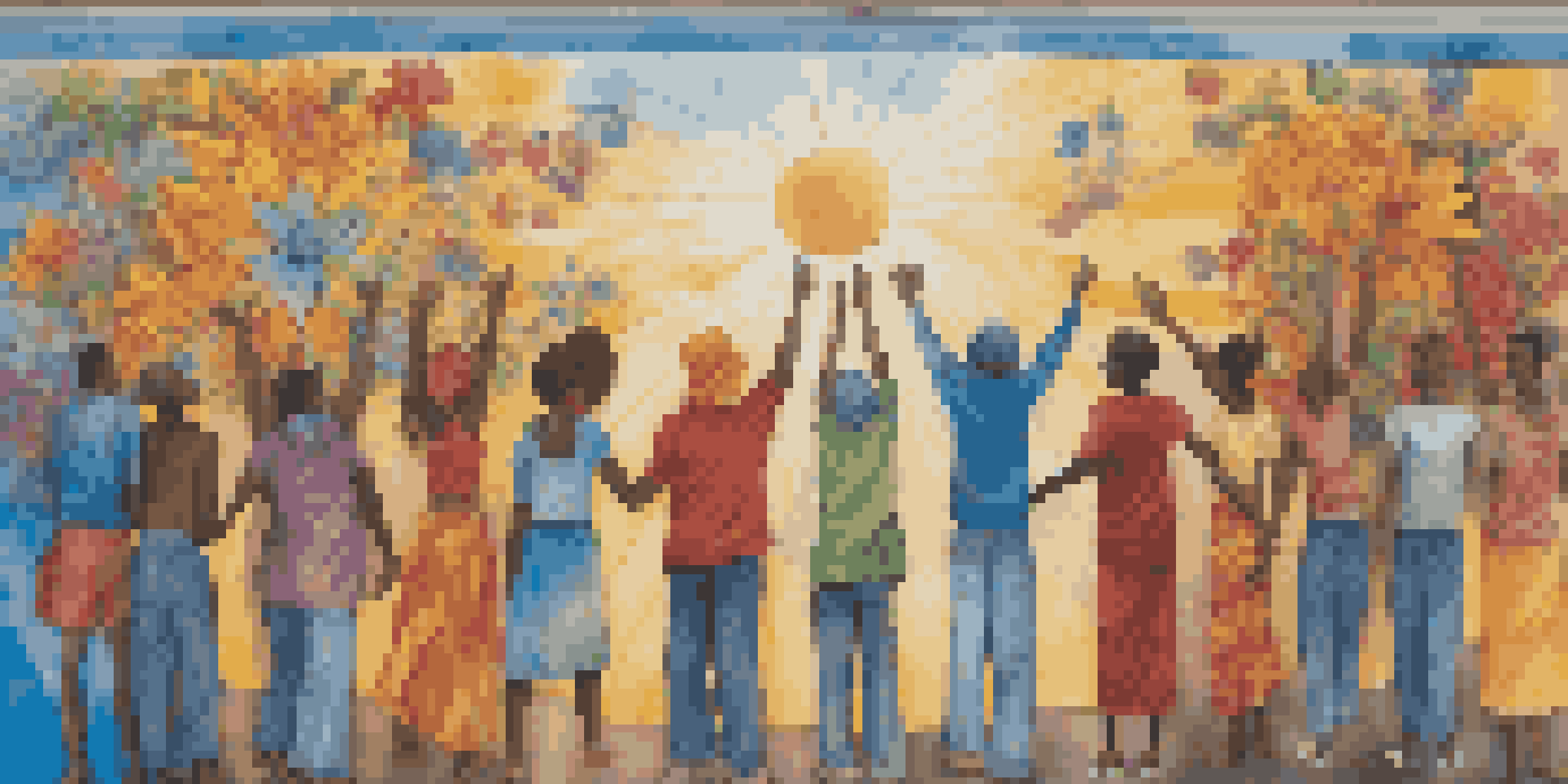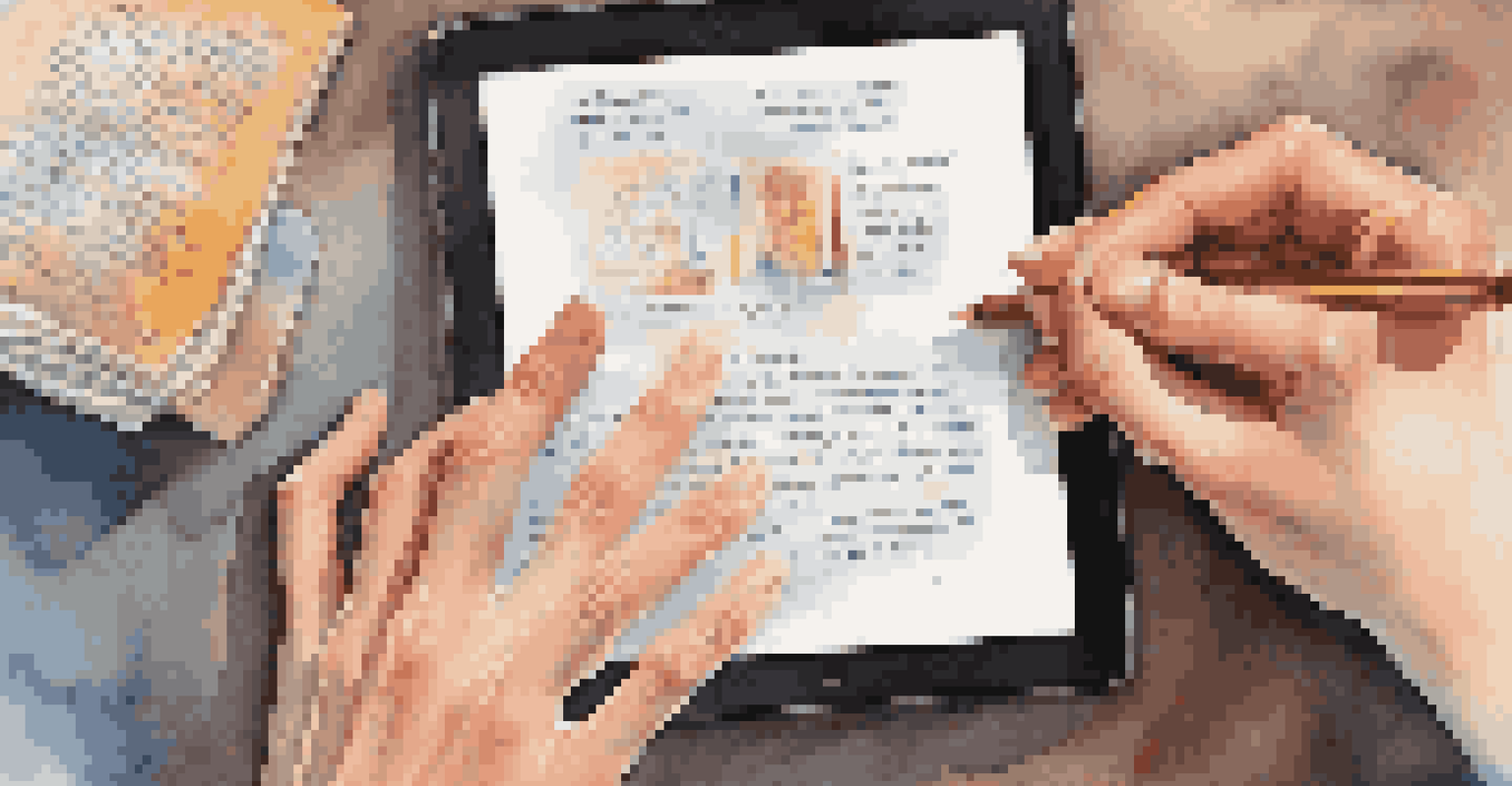The Role of Art in Global Human Rights Advocacy

Art as a Catalyst for Human Rights Awareness
Art has long served as a powerful medium for raising awareness about human rights issues. Through various forms such as paintings, music, and theater, artists can capture the essence of social injustices, making them relatable and understandable. For example, Picasso's 'Guernica' vividly depicted the horrors of war, stirring emotions and provoking thought among viewers.
Art is not a mirror to reflect the world, but a hammer with which to shape it.
By transforming complex human rights issues into visual or auditory experiences, art enables audiences to connect emotionally. This emotional connection is crucial; it moves people from passive observers to active participants in advocacy. When individuals feel the pain and struggles of others through art, they are more likely to take action.
Moreover, art can transcend language and cultural barriers, making it a universal tool for advocacy. A powerful mural in Brazil or a song from a Nigerian artist can resonate with people worldwide, igniting conversations and inspiring movements. In this way, art becomes a bridge, connecting diverse communities in the fight for human rights.
The Role of Artists in Advocacy Movements
Artists often take on the role of advocates, using their platforms to highlight human rights violations. Figures like Ai Weiwei use their art to challenge oppressive regimes, often at great personal risk. By sharing their experiences and perspectives, these artists educate the public and shed light on critical issues.

In many cases, artists collaborate with human rights organizations to amplify their messages. Through exhibitions, performances, and social media campaigns, they can reach a wider audience and drive engagement. This collaboration transforms artistic expression into a vehicle for change, combining creativity with activism.
Art Elevates Human Rights Awareness
Through various forms of artistic expression, creators effectively raise awareness and foster emotional connections regarding human rights issues.
Furthermore, artists can inspire others to join the cause. Their courage and commitment can motivate individuals to speak out against injustices in their own communities. By rallying support through art, they help to cultivate a culture of resistance against human rights abuses.
Art and Emotional Resonance in Advocacy
One of the most compelling aspects of art is its ability to evoke strong emotions. When people encounter art that depicts suffering or injustice, it often leads to feelings of empathy and compassion. This emotional resonance is vital in human rights advocacy, as it can spur individuals to take action to help others.
The power of art is that it can change the way we see ourselves and the world around us.
For instance, photojournalism can capture the stark realities faced by marginalized communities, enabling viewers to grasp the urgency of social issues. A single photograph can tell a story that sparks outrage or motivates support, highlighting the significance of visual storytelling in advocacy.
By engaging audiences on an emotional level, art encourages them to reflect on their own values and beliefs. This introspection can lead to a deeper understanding of human rights and motivate individuals to advocate for change in their own lives and communities.
The Intersection of Art and Social Justice
Art and social justice share a profound connection, as both aim to challenge inequalities and promote human dignity. Artists often use their work to comment on societal issues, addressing topics such as race, gender, and economic disparity. This intersection creates a rich dialogue about the importance of human rights in our daily lives.
For example, street art has become a significant form of social commentary, often addressing urgent issues in real-time. Murals depicting police brutality or immigration struggles can be seen in cities around the world, urging passersby to confront uncomfortable truths about their society.
Artists as Advocates for Change
Artists often collaborate with human rights organizations to amplify their messages and inspire collective action against injustice.
This blend of artistry and advocacy not only raises awareness but also fosters community engagement. By encouraging conversations around social justice, artists help cultivate environments where human rights are valued and respected.
Global Art Movements Promoting Human Rights
Across the globe, various art movements have emerged to promote human rights and social change. Initiatives such as 'Art for Amnesty' and 'The People's Climate March' harness the power of collective creativity to advocate for justice. These movements unite artists and activists, creating a powerful force for change.
By showcasing the work of diverse artists, these initiatives amplify marginalized voices and bring attention to pressing human rights issues. They encourage artists to explore themes related to oppression, resilience, and hope, ultimately fostering a sense of solidarity among diverse communities.
Such movements not only raise awareness but also provide a platform for dialogue and collaboration. Through shared experiences and artistic expression, participants can build connections that transcend borders, creating a global network of advocates committed to human rights.
Digital Art and the Future of Advocacy
In today's digital age, art has found new avenues for expression and advocacy. Online platforms allow artists to share their work with a global audience, raising awareness of human rights issues at an unprecedented scale. Social media campaigns often use art to spark conversations, mobilizing support for various causes.
For instance, viral art campaigns like 'The Ice Bucket Challenge' have demonstrated the potential of digital art to engage and inspire. By combining creativity with social media reach, artists can transform public perception and generate action on a global scale.
Digital Art Expands Advocacy Reach
In the digital age, artists utilize online platforms to share their work globally, mobilizing support and sparking conversations around human rights.
As technology continues to evolve, the role of digital art in human rights advocacy will only grow. By leveraging new tools and platforms, artists can continue to challenge injustices and inspire change, ensuring that the fight for human rights remains vibrant and relevant.
The Future of Art in Human Rights Advocacy
Looking ahead, the role of art in human rights advocacy is poised to expand and evolve. As global challenges become more complex, artists will continue to find innovative ways to address pressing social issues. The integration of technology and creativity will likely lead to new forms of artistic expression that resonate with diverse audiences.
Moreover, as awareness of human rights issues grows, the demand for artistic commentary will increase. Communities will likely continue to seek art that reflects their struggles and aspirations, fostering a culture of resilience and hope through creative expression.

Ultimately, the future of art in human rights advocacy will depend on the collaboration between artists, activists, and communities. By working together, they can harness the transformative power of art to inspire meaningful change and uphold the principles of dignity, equality, and justice for all.